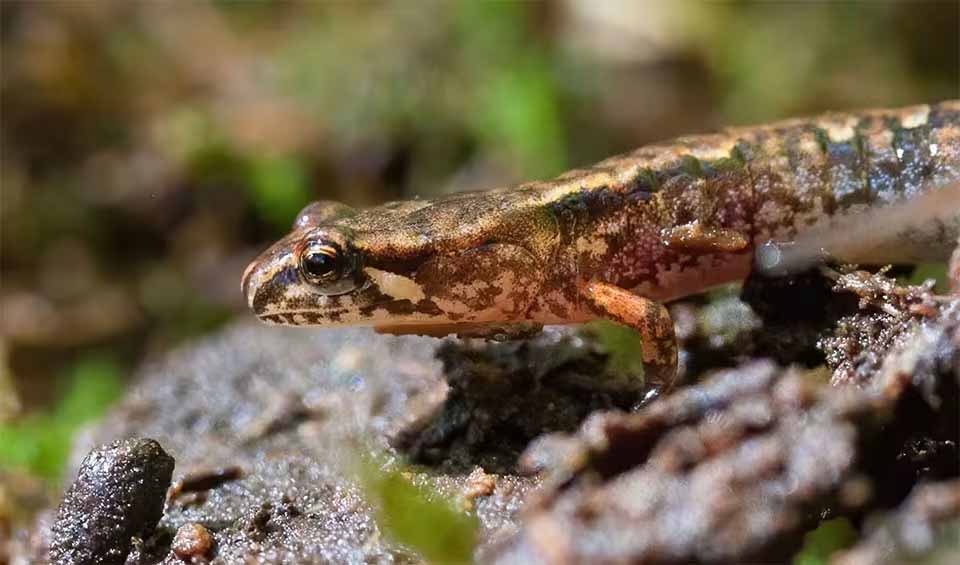They can be found in the humid and forested regions of the Blue Ridge Mountains and the Great Smoky Mountains in the eastern United States. Despite its diminutive size and unassuming appearance, this salamander boasts a range of unique characteristics that contribute to its intriguing lifestyle.
Typically measuring only a few inches, pygmy salamanders are well adapted to their woodland homes. They often hide beneath layers of moss and decaying logs in their habitat’s excellent, moist forested sections. Their distinctive chevron pattern runs down their back, although the coloration of their dorsum can vary among individuals. Their cryptic appearance and preference for hiding in humid environments make them elusive and challenging.
Pygmy salamanders are primarily active during the night, particularly when rain enhances the humidity levels in their habitat. This nocturnal behavior allows them to forage for food like insects, spiders, and other small invertebrates and engage in other activities while avoiding potential predators that are more active during the day. They are also territorial and will defend their territory from other salamanders.
When threatened, these salamanders have developed a unique defense mechanism. They become motionless, reducing their attractiveness to potential predators. This freeze response is an effective strategy for avoiding detection, especially when coupled with their cryptic coloring and tendency to remain hidden most of the time.
Distribution
 United States
United StatesAnything we've missed?
Help us improve this page by suggesting edits. Glory never dies!
Suggest an editGet to know me
Terrestrial / Aquatic
Altricial / Precocial
Polygamous / Monogamous
Dimorphic (size) / Monomorphic
Active: Diurnal / Nocturnal
Social behavior: Solitary / Pack / Herd
Diet: Carnivore / Herbivore / Omnivore / Piscivorous / Insectivore
Migratory: Yes / No
Domesticated: Yes / No
Dangerous: Yes / No





